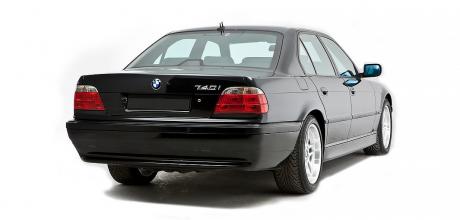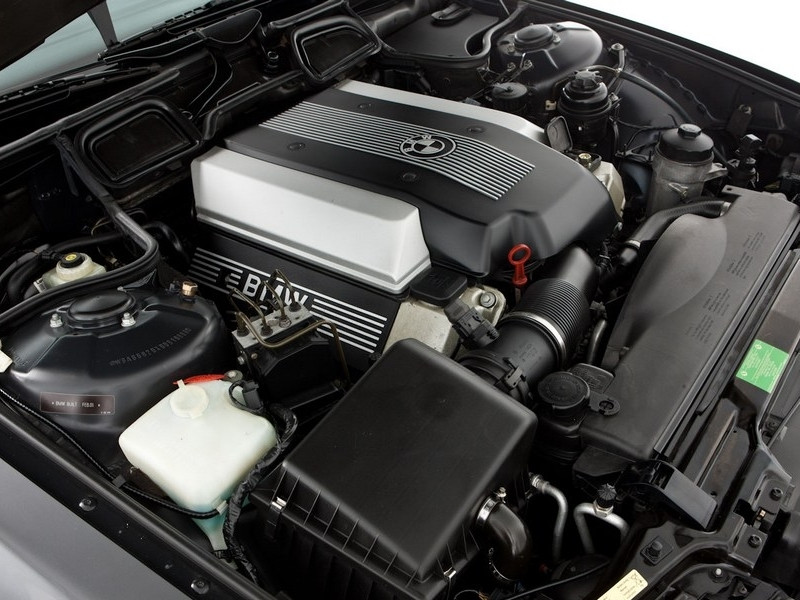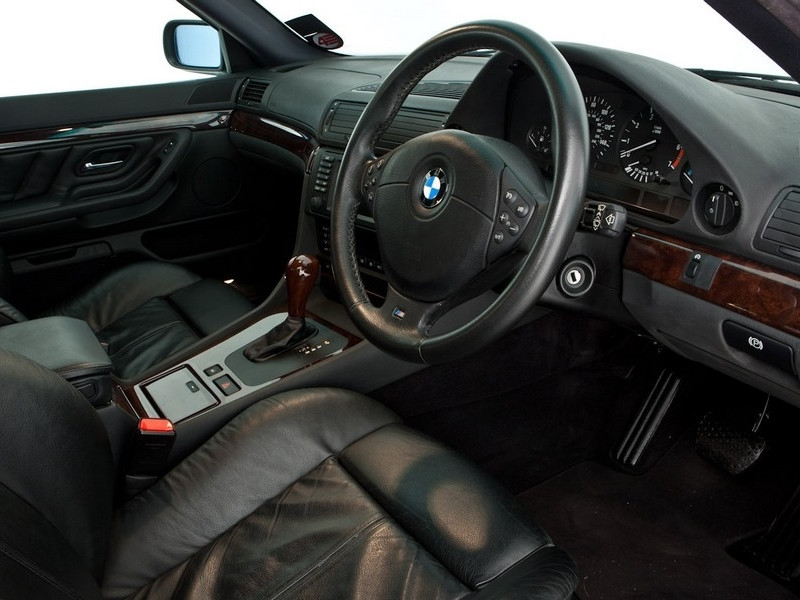Buying Guide BMW 740i E38

It was state of the art when it was new, and there’s still plenty of luxury to enjoy with one of the most beautifully-proportioned BMWs ever made.
Words: Bob Harper
Photos: Jason Dodd
Buying Guide: E38 740i
The magnificent third-gen 7 Series offers luxury on a budget – here’s what to look for when shopping for one.
Debate will rage over which is the best-looking BMW, but if you ignore the exotica and M cars, you could make a very good case for the E38 7 Series as being one of the company’s finest creations. Beautifully proportioned with nice detailing, the Seven looks superb from just about any angle, and when equipped with a stonking V8 under its shapely bonnet, it really does drive rather well. With plenty of performance, decent handling and a level of luxury that was cutting edge back when it was launched, it really is a superb machine. However, the oldest examples are now over 25 years old, so you’ll need to exercise some caution when buying, but bag a good ’un, and you’ll have a fantastic BMW on your driveway without breaking the bank.
History
Launched with plenty of fanfare in 1994, the E38 was initially available as a 730i and 740i, and both used the M60 V8 carried over from the last of the E32 Sevens. While BMW might have been trumpeting the car’s awesome computing power (allegedly more than NASA had at its disposal when it sent Apollo 11 to the moon), the press was more concerned with what it reckoned was bland styling. While the motoring journos might have thought it looked too much like a reskinned E32, they were far kinder about the E38 than the E65 that would follow!
The 740i offered 286hp from its four-litre 32-valve V8 and could knock off the 0-62mph sprint in 6.6 seconds. For the UK market, there was only one transmission option, an adaptive five-speed auto, and while there was plenty of standard kit – cruise, leather, ABS, air-con, and electric front seats, to name but a few niceties – there were plenty of costly options too. An onboard monitor with TV was one of the highlights, but items such as Comfort seats, a navigation system and electronic dampers were also on the options list.
The first major change for the 740i was in March 1996 when the troublesome – blame Nikasil bore wear – M60 V8 was dropped in favour of the updated M62 version, with its capacity now up to 4.4-litres and single Vanos variable valve timing. Power stayed the same, but torque swelled a little, and in 1998 the engine was further tweaked to include Vanos on both the inlet and exhaust side for 324lb ft of torque.
Externally, there was a facelift in late 1998, which saw scalloped headlights, jewelled rear light clusters and a few other cosmetic changes, too. An ‘M Sport Pack’ could be optioned at this time, too, with colour-coded sills and lower bumpers, 18” M Parallel alloys, M suspension, Sport seats and a few other M embellishments. In March 2001, this became a standalone model, the 740i Sport, which also coincided with the fitment of the widescreen onboard monitor.
Our choice
Your buying decisions should really be based on finding the very best car you can afford, irrespective of the exact model. But, if you’ve really got your heart set on a particular incarnation of the E38 740i, we’d probably point you in the direction of a late-model facelifted Sport. They look so good with the Sport kit, and if you get a late car, chances are its onboard monitor will look a little fresher, even if its functionality is somewhat limited.
What to pay
Long gone are the days when the classifieds were littered with sub-£1k E38 740is – the bad ones have been scrapped, while the good ones are starting to demand higher prices. Many sellers have been caught up in the ‘modern classic’ bandwagon and think that their car is worth a lot of money, so you need to set yourself a budget and wait for the right car to come along. Bringing a worn-out E38 back to its best will be a very expensive business, so it really is worth spending as much as you can to bag the best in your price bracket. Higher-mileage machines start at around £2k, and really good examples with low mileage can fetch £10k or more. Take your time, and the right car will come along within your budget.
What to look for
It might be over a quarter of a century old, but the E38 was very advanced for its day, and there’s still plenty to go wrong. Take your time doing research into all the various things that might go wrong, and examine any prospective purchase very carefully.

Early 740is were fitted with the M60 V8 that suffered from Nikasil bore wear, but any engines that were affected will have been sorted or scrapped by now. If you are looking at an M60-engined machine and it has a rough idle, check it’s had a modified block and pistons fitted. On all V8s, look for potential oil leaks. Check the cam chain tensioner for signs of leaking oil, and if any work is required in this area, make sure you replace the chain tensioner as they can wear or get gummed up and will cause the chain guides to be damaged. Replacing the tensioner is easy… the chain guides less so. Cam cover gaskets fail, which can lead to rough running as the oil tends to leak into the spark plug wells causing a misfire which can cause a coil pack to fail. The oil can also run down into the V between the cylinders and then run down the back of the block, giving the impression that a rear main oil seal is leaking. Low oil pressure in a V8 could be caused by the oil pump retaining bolts coming loose. If there’s a clacking sound coming from the engine, it could be an oil pump bolt that has come loose, causing the pump to suck in air and causing the lifters to clack. A more serious problem could be a damaged valve push rod, a worn hydraulic lifter or a loose banjo bolt on the oil spray bar. Front cover gaskets are also a potential weak point, and these are pretty expensive to replace.

Also, check for signs of overheating as the V8 really doesn’t like getting overly hot – older type water pumps were fitted with a plastic impeller which can melt, causing all sorts of disasters. If there’s no evidence of a later type being fitted, it would be a wise move to replace the pump. Electric thermostats can also play up, causing the engine to run cold if it’s open and overheat if it’s stuck shut. On the M62, look out for worn Vanos, which will probably be heard when the engine’s started from cold or will clank when hot. The engine may also feel flat and offer poor performance. It is possible to have it rebuilt by a specialist or fit a new one, but budget accordingly. In some cases, a set of replacement seals will work wonders.
Other points to look out for under the bonnet are worn engine mounts, cracked or loose radiators, faulty MAF sensors and PCV valves. The best advice is to look for a car that has had plenty of preventative maintenance carried out, backed up by invoices from reputable companies, and while these cars aren’t immune from problems, you’ll know which ones have or haven’t been addressed. As we mentioned earlier, the Seven was never offered with a manual ’box in the UK. The five-speed automatic unit fitted to all cars is generally robust. But, you can tell if the unit is on its last legs by listening for whining in the gears. We would strongly recommend that you check all three modes of the gearbox work correctly, as some owners complain of these getting stuck. The ’box was supposedly ‘sealed for life’ by BMW, but let’s face it, that’s a ridiculous concept – oil simply doesn’t last forever. If it’s not had an oil change, we’d recommend an oil flush and replenishment with the correct fluid.
Bodily, the E38 is faring pretty well but check for decent panel gaps and paint match between panels. Headlight covers are prone to damage and misting up – you’ll need new units as the glass outer panels aren’t available separately – and the earlier rear light clusters tend to crack; the facelift units are much better in this respect. Check the boot lid operates properly, as it’s a heavy lid, and replacement support mechanisms are expensive. Have a look under the car for any signs of seepage or leaks from the power steering hoses and the oil cooler pipes going to the gearbox, as they have a tendency to rust. While you’re crawling around, check the diff isn’t too wet, slight weeping from the diff seals is acceptable, but you don’t want to see a soaking wet diff. Also have a listen for rattling cats which is a sign that they’re on their way out. New ones are very expensive if you go the OEM route, and aftermarket items can vary hugely in quality.
You’ll also want to check the fuel tank, hard though this might sound. Part of the problem here is that the fuel tank venting system stops working properly, meaning that the tank is literally being sucked in, causing it to split. The most likely cause is that the carbon vent canister has failed or one of the pipes leading to or from it is blocked. There’s a modified pipe available from BMW, which might be a cheap fix. The canister is located behind the nearside rear wheel arch liner, and fitting a new canister and pipes isn’t problematic. Fitting a new tank is – the tank straddles the transmission tunnel, and the prop needs to be removed to fit it.
There aren’t really any horrors on the suspension or braking fronts but again, check the service history to check that money has been spent on these items. At the front, thrust arms and centre tie rods wear rapidly, and worn components can lead to a shimmy from the front end at around 50mph or when braking. Wheel bearings can fail at higher mileage, especially on cars with larger alloys, so listen out for rumbling/humming noises. Best to avoid cars with electronic dampers as they’re expensive to replace and don’t offer a huge advantage over a conventionally suspended machine. The brakes are pretty solid – expect 10k miles from front pads and 20k miles front a set of discs. ABS faults could be down to sensors or the control unit.
Inside, you’ll need to take your time to check everything works. Give the air-con a thorough workout, as repairs to the system tend to be expensive. Stepper motors can fail, as do compressors and condensers. In some models, the air-con drain lines need re-routing to stop gurgling sounds, too. If the A/C isn’t working, never be fobbed off by a seller just telling you “It just needs a re-gas.” Do all the windows work? Do the electric seats adjust in all directions? There’s plenty to look at so take your time. Make sure the sunroof opens and closes smoothly and doesn’t whistle on the move, which is generally down to worn or incorrectly fitted positioning pads. Check for failed pixels in the dash – not a disaster to repair, but a good bargaining point. Check the leather for rips and tears, and that bolsters aren’t sagging or becoming too discoloured with age – leather repairs can become very expensive if there’s a lot that needs to be attended to.
VERDICT
So, plenty to look at when buying an E38 740i, but it’s a wonderful machine to drive and the more effort you put into buying one, the better the ownership experience will be. The 740i is a significantly better bet than the 730i or the 735i, with that extra capacity making quite a difference on the performance front. It’s almost on par with the 750i, without the added complication that comes from the V12. You could go down the budget route and bag a 728i, but for our money, the extra verve offered by the V8 makes the 740i a compelling buy. Bag one now before they all disappear or prices go through the roof!
The 4.0-litre V8 suffered from Nikasil bore wear, but the 4.4 is a much more solid prospect.
The interior is quiet, comfortable, and a lovely place to spend some time
TECHNICAL DATA BMW E38 740i
- M60 (1994-1996) M62 (1996-2001)
- ENGINE: V8, 32-valve V8, 32-valve
- CAPACITY: 3982cc 4398cc
- MAX POWER: 286hp @ 5800rpm 286hp @ 5800rpm
- MAX TORQUE: 295lb ft @ 4500rpm 325lb ft @ 3600rpm
- 0-62MPH: 6.6 seconds 6.6 seconds
- TOP SPEED: 155mph (limited) 155mph (limited)
- ECONOMY: 20.1mpg 22.6mpg

